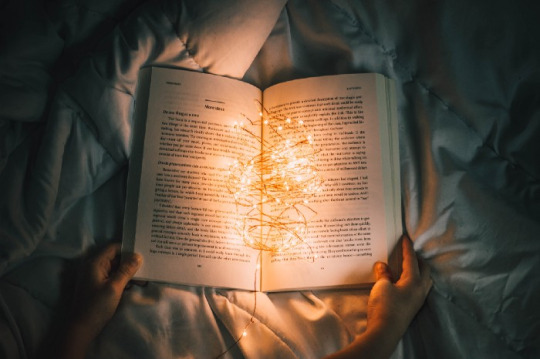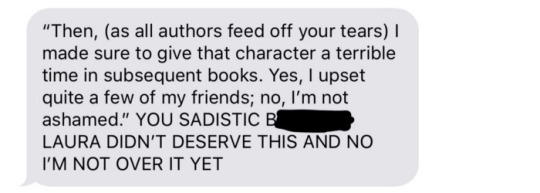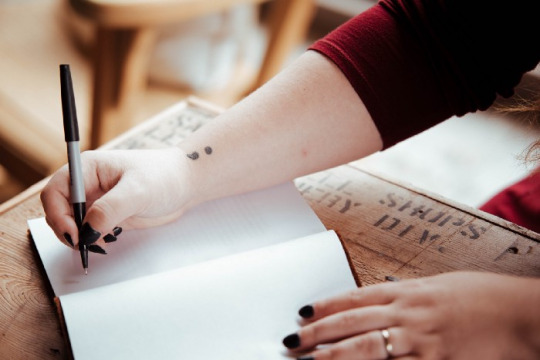Text
New Zealand Just Had a Historic Election. Across the Ditch, What If Australia Used the Same MMP System?
An MMP system would dramatically change Australia’s political landscape.
It was always going to be an unusual election. Nearly 70% of votes were cast in advance of New Zealand’s 2020 election, making for a quiet Saturday at the polls, with only 3 in 10 New Zealanders opting to vote in person this year.
Unlike in Australia, voting is not compulsory in New Zealand. Yet, voter participation reached a historic 21-year high of 82.5% of enrolled voters. This was despite the new and unique challenges of holding an election amid a pandemic.
However, the uniqueness of the lead-up to Saturday night’s election result paled in comparison to what transpired when the votes were tallied. (And no, I’m not talking about New Zealand electing what Newshub billed the “gayest parliament in the world.”)
For the first time in nearly a quarter of a century, New Zealand voters had awarded a single party majority control of the country’s parliament. Since the introduction of New Zealand’s Mixed Member Proportional (MMP) system in 1996, many had considered this impossible.
As a result of this, political parties would face protracted closed-door talks in the weeks after past elections to negotiate coalition agreements. Multiple times, party leaders have turned to far-right minority party NZ First leader Winston Peters to serve as a “kingmaker” of sorts, as Jacinda Ardern did in 2017. But on Saturday, Winston was out, and Jacinda Adern was in.
But why did minority parties hold such great power in New Zealand’s parliament for so long? The country’s MMP electoral system is a big part of the reason. And, it turns out that the MMP system could be much more representative of voters’ intentions than those in Australia or the United States.
As voters in the Australian state of Queensland and the United States head to their respective state and federal elections in the next fortnight, how do their electoral systems stack up, and are their voters missing out?
Read the full article at the Humanitarian Changemakers Network →
0 notes
Text
In Tackling a Generation-Defining Crisis, COVIDSafe Gets Human Privacy Rights, Well… Right.
The U.S. passed sweeping surveillance measures to prevent a second 9/11. Will Australia do the same to prevent a second spike of COVID-19?
youtube
Right now, we’re in the middle of the crisis that will define our generation, the Zoomers (and in just over a decade, the Quaranteens). This pandemic has changed our way of life, but it’s also changing how we perceive the world around us and react to current events. That’s why it’s important to be aware of how COVID-19 is affecting our attitudes, as we make decisions about our privacy and human rights amid a crisis – decisions that we can’t take back.
Traditional crises such as natural disasters allow for communal responses — volunteering to assist with recovery efforts, like in the communities that came together after the bushfires. However, in a pandemic, where everyone needs to keep their (social) distance, you can’t do that.
That means that while Gen Z has already been experiencing a much higher rate of negative mental health outcomes than previous generations, the reduced social interaction and community connectedness that comes with isolation certainly isn’t helping there. In addition, academics are predicting that the pandemic will help to cement the idea of “mass societal injustice” that is already very much present in our generational psyche.
However, the anxiety created by COVID-19 is affecting different generations in different ways, and with people calling the pandemic “Gen Z’s 9/11” it’s worth going back and taking a look at the people who’ve been where we are before, how that crisis affected attitudes toward security and privacy, and the choice that decision-makers were offered back then.
Read the full article at the Humanitarian Changemakers Network →
0 notes
Text
Social Change and Celebrity: The Impact of Celeb Activism
youtube
Whether it’s Kim Kardashian advocating for criminal justice reform in the U.S., Leonardo Dicaprio’s environmentalism, or even Lady Gaga assisting with fundraising for the Covid-19 response, the celebrity activism that dominated the 2010s isn't going anywhere any time soon.
That’s why it’s more important than ever to understand what’s driving this increase in celebrity activism, the impact it's having, and what we can learn to better our activism. So, to get some answers, I chatted with Leea Nanos, who told me all about the causes she believes in, and the story behind her latest song 'Bad Girl.'
Read the full article and interview in June 2020′s Changing Times →
0 notes
Text
When Solutions Have Unintended Consequences: How Plastic Straw Bans Leave the Disabled to Draw the Short Straw
youtube
Being aware about what’s going on around the world — and in your own community — is a huge part of being an effective activist. However, for a lot of people, staying on top of current events to inform their activism has taken a back seat recently, and very understandably so. With two of my immediate family members going to hospital in the last month (they’re fine now), I know it certainly has for me!
However, this can lead to new developments in our communities slipping under the radar, including the implementation of ideas that are widely accepted as solutions… until they’re given further scrutiny. This is happening right now in Queensland, as the government seeks comment on a proposal to ban plastic straws and other single-use plastics. An outright ban on plastic straws, even with exemptions for those in need, actually does little to help the environment, and violates the human rights of people with disabilities — making their lives so much harder.
If it wasn’t for an ad I saw while looking through Instagram stories a couple of days ago, I likely wouldn’t have known about the plastic straw ban proposal until after the public comment period had ended — and I suspect it would be the same for a lot of people impacted by this proposal.
Read the full article at the Humanitarian Changemakers Network →
0 notes
Text
Editing 101: Polishing Your Writing to Get Results
Watch the video at: http://youtu.be/xe96V0XlQFc
youtube
I’ve spent years working on the preliminary drafts of my first novel, and this week, I’m putting the finishing touches on my final draft, so I can start pitching it to agents and publishers. This is the three-step process I’ll be using to get the best out of my writing and maximise my results.
In my last writing video, which was all about the mistakes we can make in the writing process, I talked about keeping your writing and editing separate so that your brain can focus on one thing at a time. That same idea applies to how I’m approaching my editing, because there are three different types of editing, and they each require three different approaches to writing.
The vast majority of my editing is complete, and I wrapped that up a couple of months ago. After that, I left my novel be, and spent the time since then thinking about how to really streamline the narrative and keep the sense of mystery going from start to finish.
Phase One: Narrative Edit
A big part of streamlining my novel in my initial edits involved “closing” my ending, because it was originally written as part of a trilogy with the ending of book one leading directly into book two. With the realities of the publishing industry — especially as a lot of people have much less disposable income to spend on entertainment than they’re used to for the foreseeable future — I had to make my novel work as a standalone story, with potential for a series later if the book does well.
But now that my novel works as a single narrative, in my final edit it’s really important to focus on making that entire narrative as cohesive as possible. That means reading through your work, identifying plot holes, and filling those holes in so that your readers aren’t left unsatisfied, and with a heap of unanswered questions. As I’m writing for the mystery genre, it means making sure that the ultimate answer to my mystery makes sense, and providing enough clues and red herrings to make that possible in hindsight while also keeping readers guessing before the big reveal.
Streamlining your narrative also means making sure all of your characters are there for a clear reason. If erasing one of your characters from existence and giving their plot to another character will help readers follow your narrative, and provide you more space to build up the characterisation of just a core set of characters, then it’s time to say goodbye. At the same time, if one of your characters has so much going on that they feel lost and don’t have a distinct identity, it could be time to give them the new brother or sister they always wanted.
In terms of my book, I’m using this final edit to add in key clarifying scenes that make the motives and personalities of my characters much more distinct. But, I’ll also be making a few of my characters much more suspicious, as the key driving question of my narrative was originally a closed “yes” or “no” question that was answered before the end of the book; streamlining my narrative, defining my characters, and making readers invest in a more open ended question will keep them engaged and hopefully, entertained.
Phase Two: Scene Edit
Now that I’ve finished my narrative edit, it’s time to get more focused in phase two. This next phase of editing is all about getting specific scenes to feel cohesive. This means turning your attention to dialogue; making it feel natural, and making sure it’s like how an actual, real-life human person would speak. It’s making sure that your dialogue serves a purpose, either to progress the story or to define your characters identities.
However, don’t have your characters discuss things that they both already know about just to reveal something to your reader, because that definitely isn’t realistic. In real life, would someone randomly say to their friend “Hey, Johnathan, remember that dead guy who I hit with your car last summer who we buried in your backyard together because you didn’t think the cops would be convinced it was an accident because he cheated on your sister who doesn’t talk to you anymore because of your unresolved anger management issues? It sure would cause a lot of problems for both of us if someone found him, considering that I’m an accomplice and I already lost my licence because of all my drunk driving to due my continued struggles with the alcoholism that runs in my family that led to my parents murder-suicide.” No. Because most people only have one or less dead people buried in their backyard, so there would be no need to clarify. But seriously, it’s really important to make sure that your dialogue isn’t clunky and that you’re not using unnecessary exposition as a crutch for lazy writing.
This scene-level editing also means taking a look at your use of description. Are you taking ages and ages to describe something that could just as easily be conveyed in a sentence or two? Are you providing details that your readers care about? It’s important that your description flows, and that make sure your sentence structure is easy to read. It shouldn’t feel like you’re working at reading what you’ve written, but that your sentences have a natural flow to them that make your scenes easy to digest.
If your sentences stretch for more than a line and a half, it’s definitely time to consider breaking it up into two. And it’s also important to make sure that you’re writing in active voice and not passive voice. For example, saying “Sally stabbed Johnathan,” instead of “Johnathan was stabbed by Sally.”
One of those takes a lot less words to say, and flows so much better. Sentences written in active voice — where you put your subject that performs an action before the verb — are also so much easier to comprehend, which is good news if you’re revealing an important detail your reader needs to remember for later.
On the other side of things, your description shouldn’t be so streamlined that you’re just outright telling people what is going on. Sentences like “Sally is nervous,” aren’t fun to read, and telling your readers about your story — instead of showing them through describing specific details so they can make their own inferences — treats them like they’re stupid, and robs them of actually experiencing your story. If you write something like “Sally’s palms are sweaty, knees weak, arms are heavy, there’s vomit on her sweater already, mom’s spaghetti,” it doesn’t take Einstein to figure out that “Sally is nervous.”
Phase Three: Grammar Edit
The last phase of your editing is exactly what you think of when you think of editing in the first place: making sure your spelling and grammar is absolutely perfect. This phase of the editing process is also why I need to finish my edit this week, because my Grammarly subscription runs out on Friday and I do not have the money to renew it.
It’s really important to leave this phase until last; no cheating. Because if you change-up a scene after you’ve just gone through it correcting all the grammar, you can’t be sure that you haven’t just made another typo that you now have to fix. So don’t waste your own time by doing this bit first, because you’ll end up undoing all your fine level grammar editing and have to do it all over again anyway.
In addition to making sure all your words are spelled correctly and your punctuation is on point, it’s also important to make sure that it’s consistent. For example, how are you writing times? Are you writing your a.m’s and p.m’s with dots or no dots?
It’s time to make a decision about these stylistic grammatical choices, and it’s time to commit. Once you know what kind of presentation you want to go with grammatically, it’s pretty easy to use “Find and Replace” in Pages or Word to make sure everything matches throughout your book.
Unfortunately, spell check and services like Grammarly can’t pick up everything just yet, so it’s important for you to read your novel through to catch any typos your tech may have missed. To make sure you get absolutely everything, change the font of your book to Comic Sans and get a head-start on your audiobook deal by reading your novel out loud.
Comic Sans may look really cartoonish and ugly, but the actual letter-forms that the font uses are really distinct, and are extremely helpful for people with dyslexia. Changing your writing to an unfamiliar font and reading it out loud also forces your brain to work harder to actually comprehend the writing, and not just gloss over your mistakes using the context it already has.
I’m Done... Now What?
Now that you’ve completed these three stages of editing, your narrative should be cohesive, your scenes should flow, and your grammar should be absolutely perfect. Your work is now the best you can make it, and now it’s time to show to some other people for some last minute feedback, or take the plunge and start sending off pitch letters. It has all led up to this moment.
0 notes
Text
Amid Chinese New Year Coronavirus Quarantines, Millions of Uighur Muslims Also Remain in Lockdown. Who Tells Their Stories?

Millions of Uighur Muslims are held in Chinese concentration camps.
On what should be a day of celebration, 35 million Chinese citizens spent Chinese New Year in lockdown.
China took drastic measures to slow the spread of the Wuhan Coronavirus this weekend, placing 12 cities under quarantine. The deadly virus has infected over 900 people and killed more than 25 so far.
These quarantines are medical intervention on an unprecedented scale: the number of people quarantined in the 12 cities dwarfs the population of Australia by 9 million. However, they are not the only ones in lockdown.
As the coronavirus outbreak continues, an estimated three million Uighur Muslims — approximately 500 thousand of them children — remain incarcerated in government-operated re-education camps. Their situation is just as dire.
Read the full article at the Humanitarian Changemakers Network →
0 notes
Text
Happy Anniversary, Purple Haze!
youtube
To mark the one year anniversary of the release of Purple Haze, check out these previously unseen bloopers, plus behind the scenes footage.
0 notes
Text
People Evolve – Writing Does, Too. So, What’s Next for Literature?

It’s time to write the next chapter of the story of literature. Photo: Nong Vang // Unsplash
Literature comes in many modes, modes which have been changing and adapting over millennia. We’ve had oral storytelling, the origin of many fairytales ingrained in our culture, written texts, which have contributed to the literary canon, and filmmaking, an extremely recent phenomenon when you consider all of human history but one that has definitely left its mark on our culture at large. As the methodology of literature has evolved, we’ve never entirely left any mode behind.
For example, oral storytelling has minted many ‘YouTube millionaires’ who’ve risen to fame through their use of the notable “story time” video format, which consists of them delivering (usually extremely exaggerated) stories about their lives to camera. So, when thinking about the future of literature, the question you should be asking isn’t “What will replace our current modes of literature?” but rather, “What new technology will complement these existing modes?”
The Answer Starts With Interactive Fiction…

Game on! Is the future of literature already here? Not quite… Photo: Florian Gagnepain // Unsplash
You might think the answer lies with video games, a format that has built upon filmmaking by adding a layer of perceived interactivity that makes players feel like they control the story. Many popular releases have taken this a step further in recent times, with the indie game ‘Until Dawn’ (2015) allowing players to achieve a range of possible endings, and more recent entries in the ‘Five Nights at Freddy’s’ (2014) series having “good” and “bad” endings. This style of interactive media allows consumers to feel more ownership over a particular narrative, but is the feeling of ownership among fans necessarily a good thing to foster?
This possessiveness over literature is one of the three main ingredients in “toxic fandom” according to media critic Rachael Lefler, who says possessive fans see media as “a territory or property they own.” In western culture, this can manifest as newly-hired female writers for the series ‘Rick & Morty’ (2013) facing harassment from fans who perceive them as “forced-SJW hires” who are ruining “their” show, as well as similar sexist harassment targeted at Marvel writers for a viral selfie.
youtube
Ahead of its time? ‘Perfect Blue’ (1997) explores toxic fandom in Japan.
Toxic fandom isn’t just a Western problem – similar issues occur with fan behaviour toward Japanese J-Pop idols. The anime-psychological thriller ‘Perfect Blue,’ (1997) which features a stalker tormenting and impersonating his favourite J-Pop idol, explores this issue in-depth as it pertains to Japan.
The level of interactivity applied to modern texts can also be harmful to fandoms, in that it can be difficult for fans to know where the interactivity ends. Netflix demonstrated this with their first foray into the interactive film genre, ‘Black Mirror: Bandersnatch’ (2019), which had some fans convinced that there was a sixth “secret ending” within the movie in addition to the five main endings that were known. The ambiguity led to many online fan communities wasting hours of their time looking for clues to the alleged secret ending; this was ultimately a wild goose chase which only served to make it even more apparent that the film did not function as a text with a satisfying and “complete” plot.

Great as a game — not so much as a narrative; ‘Bandersnatch’ fell flat for some ‘Black Mirror’ fans. Photo: Netflix
However, even with texts that are not inherently interactive, such as HBO’s ‘Westworld’ (2017) – itself a meta-commentary on the limits of interactive texts. The show employed a trans-media strategy that allowed fans to access “secret” websites belonging to organisations and characters in the show. These websites then contained clues as to what would happen in future episodes of the show, but this led many fans to obsessively analyse trailers and posts from Westworld’s social media accounts to find more clues and secrets that weren’t there. In both of these cases, the expectations of the writers and viewers didn’t match up, leading viewers to look for deeper layers of interactivity that didn’t exist.

A Healthy Author-Reader Dialogue is Key.

Dedicated fans want to add to the story! Photo: Kaitlyn Baker // Unsplash
The tenacity of consumers of media to run with a story and build upon it has been apparent for decades, with growing online communities allowing fans to discuss media and even write fan-fiction to add on to the plots of their favourite texts. Some of these fan-fiction works have even entered mainstream consciousness, with backing from legacy media helping to turn well-known fan-fiction into physical books and globally released films. Two key examples of this phenomenon are ‘Fifty Shades of Grey,’ (2015) which was initially ‘Twilight’ (2008) fan-fiction, and the romance movie ‘After,’ (2019) which was originally fan-fiction about Harry Styles.
This tenacity of fans for storytelling is what helped the success of the comedy movie ‘Clue,’ (1985) based on the murder-mystery board game of the same name. The film had three different endings, with each cinema that showed it only receiving one conclusion. The film’s writers believed that this gimmick would allow “super-fans” to see the film multiple times, but ‘Clue’ ended up being a box-office flop. It was only through television re-runs that the film was able to build up an online fan community that enjoyed writing alternate endings and become the 80s cult classic that it is today.
youtube
Fans of ‘Clue’ who’d watched it in different places were very confused when talking about it!
So, we’ve learned that it’s crucial to balance the expectations of an audience with the ambitions of a work’s creator, and this is a lesson that I employed in writing my mystery-novel series, ‘Revenge in Ridgeview.’ My series contains three mystery novels, and in writing them, I communicated extensively with my audience (at the time: only my friends who I badgered into reading them). As I was releasing the books online with a chapter a week (on the very same platform where ‘After’ was first published), I was also able to engage with readers of my work from other countries. The dialogue I had with my readers allowed me to ask them questions at the end of the first book, a key one being “Who is your favourite character?” Then, (as all authors feed off your tears) I made sure to give that character a terrible time in subsequent books. Yes, I upset quite a few of my friends; no, I’m not ashamed.

The Future is Personalised.

Is this the future of literature? Photo: Markus Spiske // Unsplash
So, now we can answer the question we’re here to get to the bottom of: what is next for literature? Well, taking the lessons we’ve learned, we can see that the next mode of media will be something that relies on computers, as seen in the way video games built upon filmmaking. However, unlike video games, writers will likely want to take back some of the feeling ownership over their texts. So, in essence, the mode will be interactive, but in a way where readers don’t know that they’re interacting with it. How can we accomplish this? With personalised literature; you wouldn’t “choose your adventure,” the adventure would choose you.
Netflix and other streaming services are already in a unique position to make this happen; they’ve collected mountains of data from every single profile on their service: your watch habits, when you watch, where you watch from, and as seen in the aftermath of their ‘Bandersnatch’ experiment, they even store the choices you make when viewing their interactive originals, forever. So, what would this allow writers to do?
Well, we’ve already seen that demonstrated way back in 1985 with ‘Clue,’ where cinemas had alternate endings; Netflix could do the same thing, but this time, instead of showing a random conclusion to a viewer with no idea of how they would react, Netflix could instead determine the “best ending” for the viewer and show them that one. The company is already experimenting with this to a certain extent: Netflix presents the episodes of ‘Love, Death & Robots’ (2019) in different orders for different users.

Journalists can also take advatage of personalised literature. Photo: Mr Cup / Fabien Barral // Unsplash
Furthermore, while I’ve avoided discussing non-fictional literature in so far, the news media is also in a unique position to take advantage of our move toward personalised texts.
For example, BBC News has been trialling personalised articles – or “perceptive media” as they call it – on their website since mid-2012 in a bid to appeal more to young adult readers. These efforts have allowed them to add a local angle to specific stories with a national focus by using the user’s location, such as showing local crime statistics in an article that discusses national trends.
The BBC also experimented with reports covering developing stories by adding personalised summaries based on previous articles on the topic that a user had read; they quickly scrapped this feature because “participants quite rightly asked how we knew what they’d read.” So, not all personalisation is well-received – sometimes it’s just too creepy – but journalists should still experiment in this area.

The Discussion Continues…

Lights, camera, action! Let’s hit record on the next phase of literature. Photo: Thomas William // Unsplash
As I noted earlier, the delivery of texts will always adapt. We’ve had oral storytelling, writing, filmmaking, video games and interactive fiction, and it’s likely that next, we’ll have personalised literature. This next mode certainly won’t be the last, and it won’t come without flaws. There’s still an ethical debate to be had about whether these big companies should even have your data in the first place, and about how they’ll use it.
For example, could streaming services like Netflix edit out scenes featuring LGBTQI couples if they detect that a viewer is homophobic, and would it be ethical to do so? I used my dialogue with my audience to create a text that would challenge them, but services with a financial incentive (and lots more of your data at their disposal) may not have the same moral imperative. So, let’s start having that conversation, so we can make sure that the future of literature is a good one.

Update: My friends are still upset about what I did to their favourite character. The power of knowing your readers, I guess?

1 note
·
View note
Text
Suffer No More: The Secrets and Lies of the NDIS
youtube
Watch my special investigation into the negative impacts of the NDIS on those with complex and profound disabilities right here!
0 notes
Text
Suffer No More - Trailer
youtube
My first documentary for 2019 is a special investigation into the botched NDIS rollout, and how it’s negatively impacted those with complex and profound disabilities. Watch the trailer right here!
0 notes
Text
Jase Announces His Debut Album + More Music News
youtube
In this week’s episode of Minds in Tune, I caught up with our rising star for April, Jason Damot, to run through the week’s biggest stories in mental health and music and to get all the details on his upcoming debut album!
0 notes
Text
Eating Disorder Recovery: The Road To Better Health
youtube
This week on Minds in Tune, co-host Zelig and I discussed eating disorder recovery. How can you start on the road to recovery, and what are some good strategies to use?
If you live in Australia and this segment raises concerns, please call the Butterfly Foundation on 1800 ED HOPE. In a crisis, always call emergency services.
0 notes
Text
Nicole Gibson On Her Experiences As Mental Health Comissioner
youtube
Nicole Gibson joined me on Minds in Tune to talk about her time as mental health commissioner, why she's so passionate about speaking up about mental health, and shares the song that got her through a very difficult time.
0 notes
Text
The Lost Girls: How Women With Autism Are Hurt By Sexist Science

This article on the under-diagnosis of autism in women - written by the talented Minds in Tune contributor Madeleine Orr - that I polished and contributed to, has been featured in Medium’s health category by their curators.
You can read the piece here.
0 notes
Text
Nicole Gibson Shares Her Biggest Fear and Biggest Tip for Success
youtube
In part one of my interview with Nicole Gibson, she shares her plans to take her Love Out Loud movement to the next level in 2019. Plus, Nicole opens up about the one thing that scares her the most, and shares how to achieve success in your professional pursuits.
0 notes
Text
Jeanette from ChangeMakeHer Talks Women in STEM + The Week's Biggest Stories
youtube
This week, Jeanette from ChangeMakeHer joins Loughlin to run through the biggest stories of the week, and talks about the issues surrounding female representation in STEM fields. Other topics discussed include a new treatment for post natal depression that comes with a huge catch, and an unfortunate incident at a Brisbane concert that highlights the importance of accessible music venues.
0 notes
Text
Make Mental Health a Part of the Discussion This International Women’s Day

On Friday, let’s talk about mental health. Photo by Timothy L Brock on Unsplash
On the 8th of March, people around the world will acknowledge International Women’s Day – a day to celebrate the achievements of women and call for further progress toward gender parity.
Since the first IWD gathering over a century ago in 1911, the event has been a time for action, for unity, and for reflection. This has led to a lot of discussion about women’s experiences and struggles, but one thing that appears to be left out of most of these discussions is mental health.
Historically, mental health and discussion around it has been extremely stigmatised – especially when it comes to gender. In fact, the term “hysteria,” a mental disorder thought to have manifested in women that experts have thankfully left in the past, actually comes from the Greek words for uterus: “hystera.”

Pictured: you after finding out the term “hysteria” was used unironically by experts until 1980. Photo by Gabriel Matula on Unsplash
This stigma is exactly what we here at Minds in Tune try to tackle every week on our radio show, and that’s why our host Diya invited her friend Nancy on our latest episode for a very special segment – and a very important discussion.
Key points:
Gender contributes to mental health; women are more likely to have poor mental wellbeing. (Health Europa, 2018; Mayo Clinic, 2019; World Health Organisation, 2019)
Our cultural attitudes lead to underreporting of poor mental health amongst all genders. (BBC News, 2016; Beyondblue, 2012)
“Unequal sharing of care responsibilities” and online abuse are key contributors toward poor mental health in females. (Mental Health Europe, 2018; Mental Health Foundation, 2018)
Domestic violence and sexual assault are also risk factors, but are under-detected by mental health services. (Agenda, 2016)

Diya did some reading of her own beforehand, and brought a shocking statistic to the table to open our #IWD2019 discussion. According to Mayo Clinic, women are twice as likely as men to have depression and anxiety. On top of that, Nancy added that they’re also more likely than men to report their health as “poor.”
Gender is a critical determinant of mental health and mental illness.

When it comes to mental health, more women are struggling. Photo by Nick Owuor (astro.nic.visuals) on Unsplash
The World Health Organisation also acknowledges that there is a gendered disparity in mental illness rates. “Gender is a critical determinant of mental health and mental illness,” states their website. “[It] determines the differential power and control men and women have over the socioeconomic determinants of their mental health and lives, their social position, status and treatment in society and their susceptibility and exposure to specific mental health risks.” In essence, men and women can have different levels of control over their exposure to certain mental health risk factors.
But is gender really the main thing impacting these numbers… or is it something else?
To answer that question, we have to acknowledge the cultural context surrounding both mental health and gender. This means accepting that we do live in a society where men and boys are often pressured to bury their emotions, and thus they may be less likely to report symptoms of mental health if they do occur.
This could skew those statistics, however, it’s also symptomatic of the gender roles that pervade our daily lives. Until we achieve greater gender parity and tackle the stereotype that links showing emotion with femininity despite this not being the case, there will always be at least some disparity in the numbers.
However, that isn’t the whole picture, as underreporting surrounding mental health issues isn’t an issue that only affects males. As Diya brought up later in the discussion, there are many women and girls who live their lives on the autistic spectrum, but are never diagnosed or are diagnosed late in life.

Life without a diagnosis can feel extremely isolating. Photo by Molly Belle on Unsplash
The UK has an organisation called the National Autistic Society who present a number of theories on why this could be on their website, including that the diagnostic tests for autism don’t quite work for females, and that women and girls are better at “masking or camouflaging their difficulties.” Coincidentally, the NAS’s website crashed recently after popular game show personality Anne Hegerty – “The Governess” on the Chase Australia – opened up about her late diagnosis with Asperger’s syndrome during her time on the British version of I’m a Celebrity… Get Me Out of Here!
So, all up, there are several facets of our cultural views surrounding mental health that could be impacting those statistics aside from the actual prevalence of mental illness. However, our culture also contributes to underreporting of mental illness in women, so it evens out. In fact, as stated in the quote from the World Health Organisation earlier, this very culture could be leading to the actual increased prevalence of mental illness among females in the first place.
Diya and Nancy brought up several of these cultural risk factors in their discussion, and shared an important quote from Maria Nyman, the director of Mental Health Europe. “Each of us may experience mental distress for our own unique reasons,” Maria explains, “but women are more likely than men to experience stress, and unequal sharing of care responsibilities is very common: that’s why work-life balance measures can really make a difference for mental health and gender equality.”
Brisbane’s biggest cricket ground wouldn’t have enough seats for all the women in Brisbane who’ve been impacted by extensive violence.
Other contributing factors to the gendered mental health disparity are domestic violence and abuse, with online mediated spaces (such as social media platforms or comment sections) playing an increasingly bigger role in this area. According to the Mental Health Foundation, evidence “generally suggests” that our online culture contributes to the disparity, but more research needs to be conducted. This would make sense in the context of the many anecdotal reports surfacing that indicate new digital platforms and technologies – especially in the Internet of Things – are also creating new ways to exert control and power over one’s partner.
Away from screens, the situation isn’t looking much brighter: Diya and Nancy also discussed a report from Agenda called Hidden Hurt that includes many more disheartening statistics. The report found that one in 20 women have experienced “extensive” violence, and that over 75% of those women have experienced “life-threatening trauma.” Putting those figures into some real-world numbers, that would mean over 57 thousand women living in Brisbane, Australia – where Minds in Tune is based – have been impacted by extensive violence. To put that into further context: if they all decided to go to the Gabba – Brisbane’s biggest cricket ground – there wouldn’t be room for over 15 thousand of them.

The Gabba still wouldn’t have enough room for all the victims. Source: Wikimedia Commons
We’ve established that the facts are grim, but what is being done about it? Unfortunately, mental health services, which are already under a lot of pressure, aren’t doing as much as they should for women, as domestic violence isn’t detected by them as much as it should be. That’s likely because – as the Hidden Hurt report from Agenda indicates – only half of the mental health trusts they questioned had a policy on asking women about domestic violence. Furthermore, only one trust had a women’s mental health strategy.
So, our culture is contributing to a gendered disparity in mental illness rates amongst males and females, and our mental health services need to improve to better aid the women who need them, but this International Women’s Day, you can help. Why not check in with your friends and family to do your bit in breaking down the mental health stigma – armed with some last advice from Diya and Nancy?

Time for a check in. Photo by Farrel Nobel on Unsplash
“It’s really hard to ask these kinds of questions,” shares Diya, “especially if [your friend] isn’t ready,” so it might not be the easiest conversation to have. If your friend doesn’t want to share what’s going on with them, that’s completely okay. On the other hand, don’t panic if your friend starts sharing some heavy experiences with you. “Just be there and support them,” suggests Nancy, “so they know that someone cares.”
If you’re not feeling up to a personal conversation, there’s another conversation you can be having, too. You could continue Diya and Nancy’s conversation, and spread greater awareness about how mental health impacts women. After all, every conversation gets us all one step closer to creating a #BalanceforBetter.
Enjoy your International Women’s Day — however you choose to spend it!


Loughlin is the executive producer of Minds in Tune. When not working on this project, writing for his personal blog, or making films, he can be found on Instagram. His handle is: @loughlinptrck.
Keep up with the blog to read more of our Women’s History Month articles, and tune in on radio to new episodes of Minds in Tune every Friday at 6 p.m. AEDT on SYN Nation — or catch up in your preferred podcast app. For more Minds in Tune content, check out our posts from @mindsintune on most social media platforms.
P.S. To the people who will ask: yes, there is an International Men’s Day, it is acknowledged on the 9th of November, and we’ve produced a discussion for that one as well. See you then!
0 notes